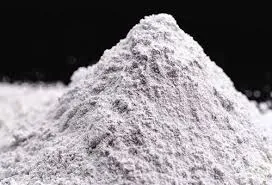
Aug . 13, 2024 19:39 Back to list
High-Performance HPMC-Based Tile Adhesives for Enhanced Bonding and Durability in Construction Projects
Understanding Tile Adhesive with HPMC A Key Component in Modern Construction
In the ever-evolving world of construction and tiling, the materials we use are crucial to the durability and aesthetics of our projects. One of the integral components in many tile adhesives today is Hydroxypropyl Methylcellulose (HPMC). This article will delve into the significance of HPMC in tile adhesives, its properties, and the advantages it offers in the tiling process.
What is HPMC?
Hydroxypropyl Methylcellulose (HPMC) is a non-ionic, water-soluble polymer derived from cellulose. It is widely used in various applications, from pharmaceuticals to food products, and most notably in the construction sector as a thickening agent and binder in tile adhesives and grouts. HPMC is produced through the reaction of cellulose with propylene oxide and methyl chloride, resulting in a versatile compound that enhances the performance of adhesive products.
The Role of HPMC in Tile Adhesives
Tile adhesives are essential for ensuring that tiles adhere firmly to surfaces, providing both structural integrity and aesthetic appeal. HPMC plays several vital roles in this context
1. Improved Workability HPMC imparts a smooth consistency to tile adhesives, making them easier to spread and apply. This workability is crucial for achieving a uniform layer, ensuring that tiles are properly bedded and aligned, ultimately leading to better results in installation.
2. Water Retention One of the key benefits of HPMC is its ability to retain water. This characteristic prevents the adhesive from drying out too quickly, allowing sufficient time for tile placement and adjustments. Enhanced water retention is particularly beneficial in hot and dry conditions, where evaporation can compromise the adhesive’s effectiveness.
tile adhesive hpmc

3. Open Time Extension HPMC increases the open time of tile adhesive, meaning that the adhesive remains workable for an extended period after application. This feature is crucial for large-scale projects or intricate tiling patterns where precise placement and adjustments are necessary before setting the tiles.
4. Enhanced Bond Strength The addition of HPMC to tile adhesives can improve their bonding strength. This results in tiles that are less likely to crack or come loose over time, ensuring the longevity of the installation.
5. Resistance to Biological Growth Tile surfaces are often exposed to moisture, making them susceptible to mold and mildew. HPMC-containing adhesives exhibit antifungal and antibacterial properties, minimizing the risk of biological growth that can mar the appearance and integrity of tiled surfaces.
The Benefits of Using HPMC-Based Tile Adhesives
The incorporation of HPMC into tile adhesives comes with a plethora of advantages. Firstly, it enhances the performance and longevity of tile installations, reducing the need for repairs and maintenance. Secondly, it provides a level of flexibility in the application process, accommodating various tiling methods and substrates. Lastly, HPMC is non-toxic and environmentally friendly, aligning with the growing consumer demand for sustainable building materials.
Conclusion
As the construction industry continues to innovate, the role of materials like HPMC remains vital. Understanding the benefits of Hydroxypropyl Methylcellulose in tile adhesives highlights its importance in achieving durable, beautiful, and sustainable tiling solutions. Whether you are a professional contractor or a DIY enthusiast, recognizing the significance of HPMC can lead to superior results in your tiling projects, making it an indispensable component in modern construction. Embracing innovative materials such as HPMC not only enhances the quality of work but also contributes to a more sustainable future in the building industry.
-
Versatile Hpmc Uses in Different Industries
NewsJun.19,2025
-
Redispersible Powder's Role in Enhancing Durability of Construction Products
NewsJun.19,2025
-
Hydroxyethyl Cellulose Applications Driving Green Industrial Processes
NewsJun.19,2025
-
Exploring Different Redispersible Polymer Powder
NewsJun.19,2025
-
Choosing the Right Mortar Bonding Agent
NewsJun.19,2025
-
Applications and Significance of China Hpmc in Modern Industries
NewsJun.19,2025







